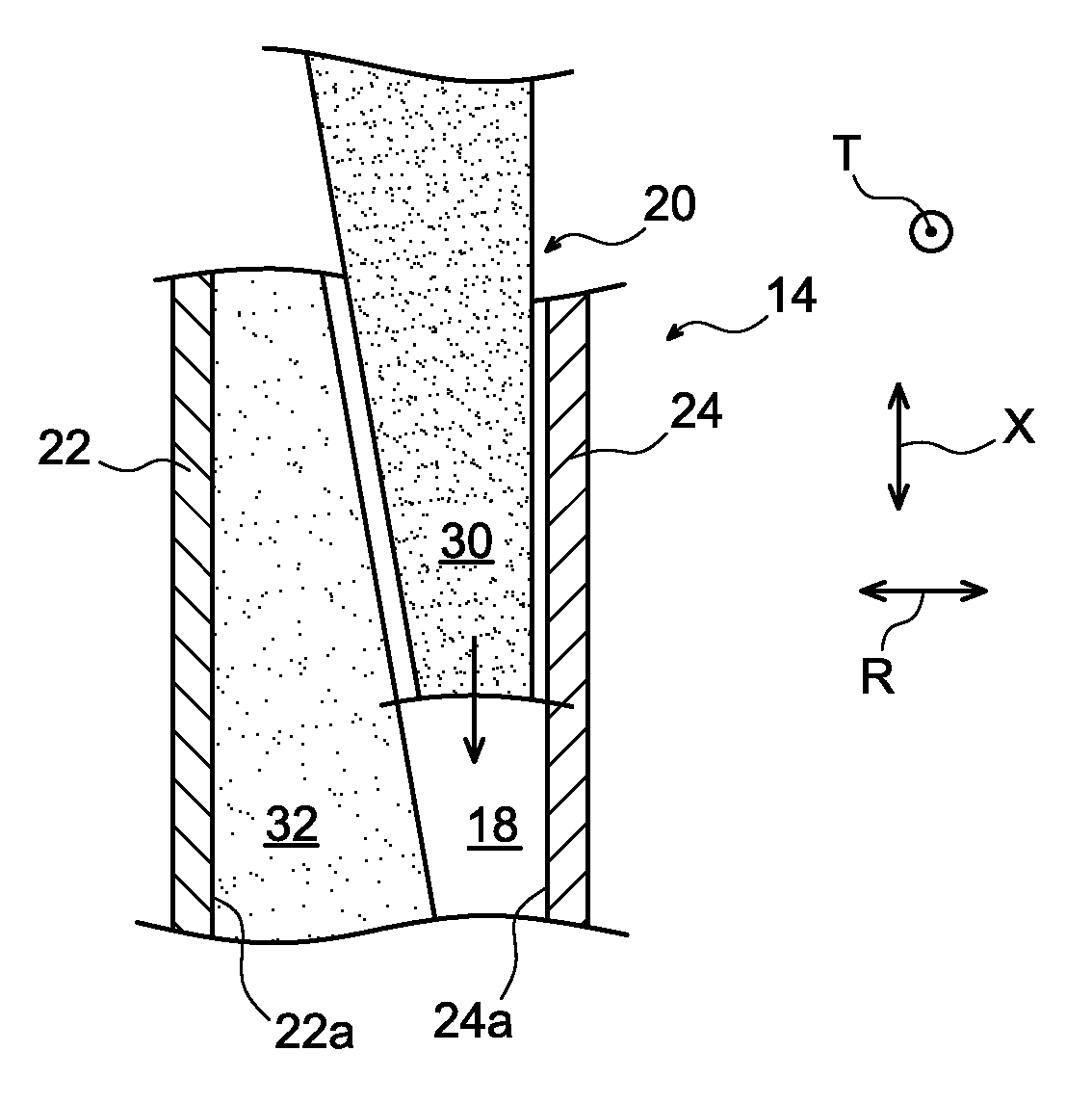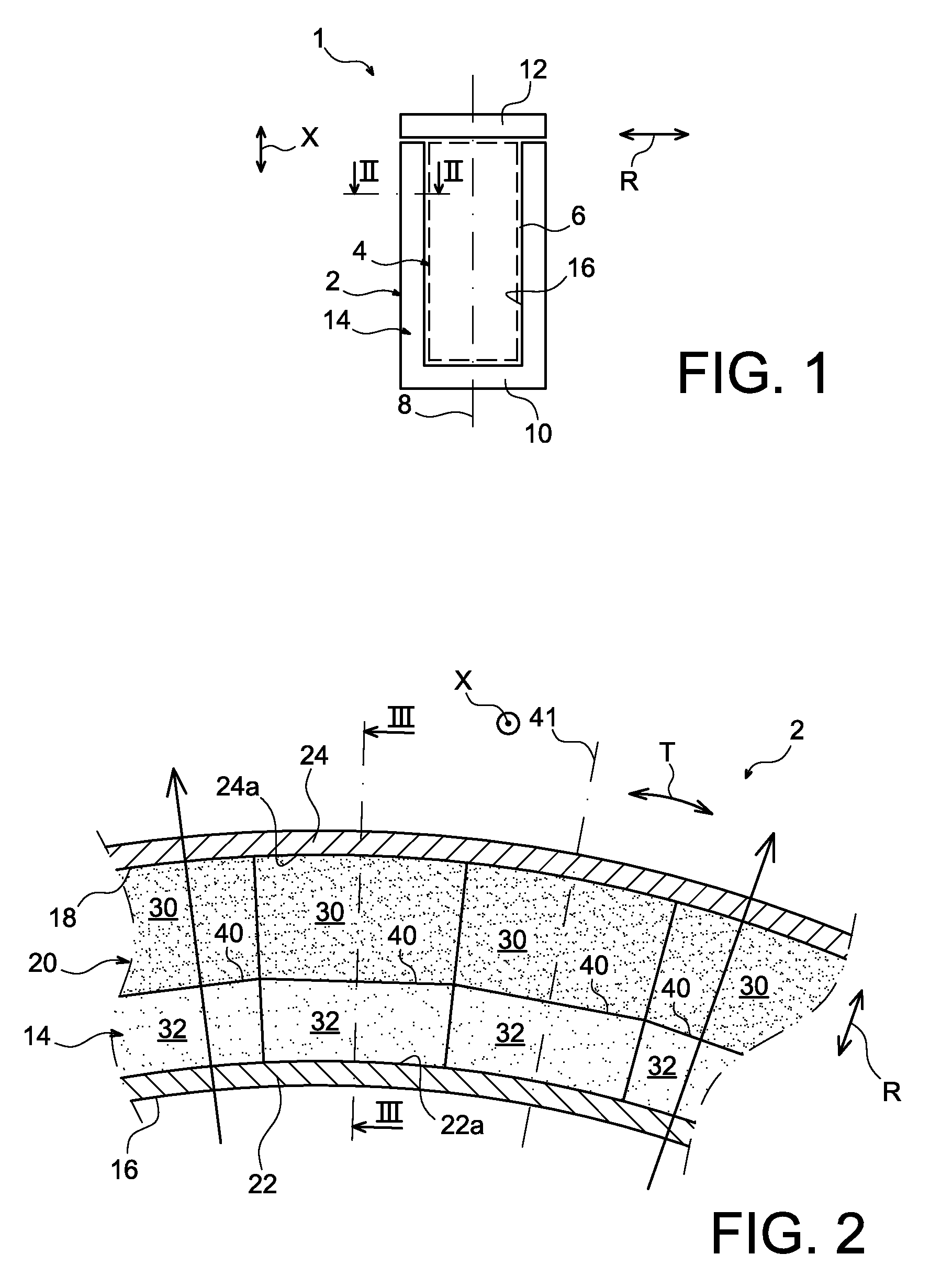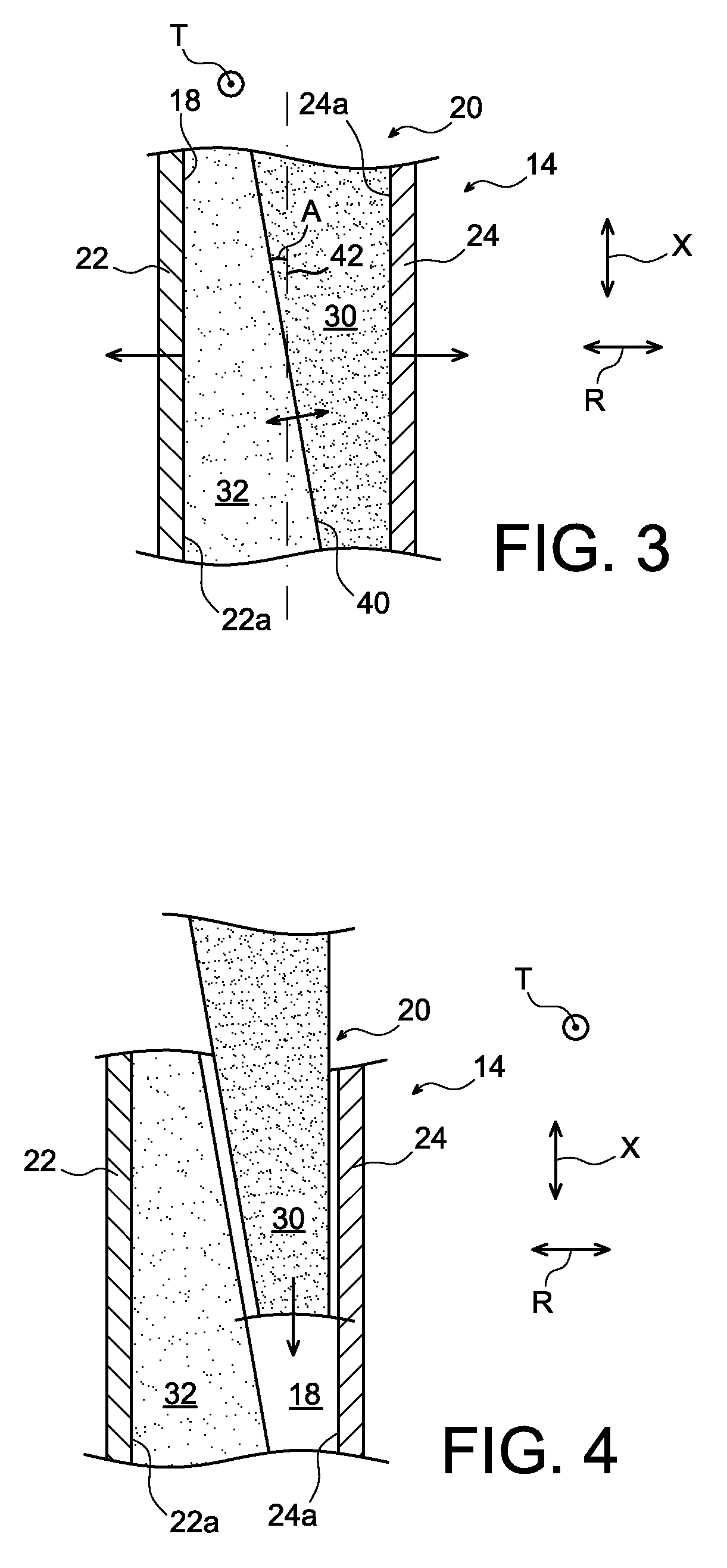Canister for transporting and/or storing radioactive materials comprising radially stacked radiological protection components
a radiological protection and canister technology, applied in the field of canisters, can solve the problems of reducing the clearance between the radiological protection components and the shells, affecting the efficiency of the fuel assembly,
- Summary
- Abstract
- Description
- Claims
- Application Information
AI Technical Summary
Benefits of technology
Problems solved by technology
Method used
Image
Examples
Embodiment Construction
[0033]Firstly with reference to FIG. 1, a container 1 for transporting and / or storing nuclear fuel assemblies is shown. It is in this respect recalled that the invention is in no way limited to the transport / storage of this type of nuclear material.
[0034]The container 1 comprises overall a canister 2, object of the present invention, inside of which is a storage device 4, also known as storage basket. The device 4 is provided to be placed in a cavity for housing 6 the canister 2, as shown schematically in FIG. 1, in which it is also possible to perceive the longitudinal axis 8 of said canister, merged with the longitudinal axes of the storage device and the housing cavity.
[0035]Throughout the description, the term “longitudinal” must be understood as parallel to the longitudinal axis 8 and to the longitudinal direction X of the canister, and the term “circumferential” must be understood as orthogonal to this same longitudinal axis 8, as well as to a transversal / radial R direction of...
PUM
| Property | Measurement | Unit |
|---|---|---|
| angle | aaaaa | aaaaa |
| angle | aaaaa | aaaaa |
| radioactive | aaaaa | aaaaa |
Abstract
Description
Claims
Application Information
 Login to View More
Login to View More - R&D
- Intellectual Property
- Life Sciences
- Materials
- Tech Scout
- Unparalleled Data Quality
- Higher Quality Content
- 60% Fewer Hallucinations
Browse by: Latest US Patents, China's latest patents, Technical Efficacy Thesaurus, Application Domain, Technology Topic, Popular Technical Reports.
© 2025 PatSnap. All rights reserved.Legal|Privacy policy|Modern Slavery Act Transparency Statement|Sitemap|About US| Contact US: help@patsnap.com



